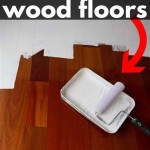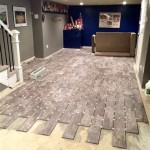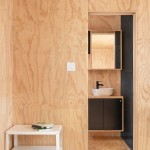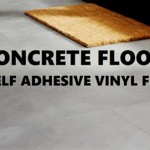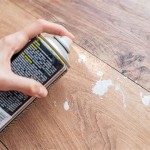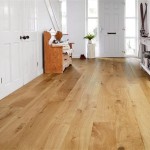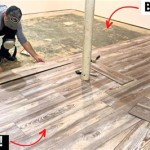The Definitive Guide To Choosing The Best Flooring For Your Home
Selecting the right flooring for your home is a significant decision that impacts both the aesthetics and functionality of your living spaces. With countless options available, from classic hardwoods to modern laminates, the process can feel overwhelming. This guide aims to provide a comprehensive overview of popular flooring choices, their advantages and disadvantages, and essential factors to consider when making your selection.
1. Hardwood Flooring: Timeless Elegance and Durability
Hardwood flooring remains a timeless classic, renowned for its elegance, durability, and value appreciation. It comes in a wide array of species, each possessing unique characteristics in terms of color, grain patterns, and hardness. Popular choices include oak, maple, cherry, and walnut. The natural beauty of hardwood adds warmth and sophistication to any room.
Advantages: *
Durability:
Hardwood floors are highly resistant to wear and tear, making them suitable for high-traffic areas. *Easy Maintenance:
Regular sweeping and occasional mopping are sufficient to maintain their pristine condition. *Value Appreciation:
Hardwood flooring increases the resale value of a home. *Natural Beauty:
The unique grains and colors of hardwood create a timeless and elegant aesthetic. Disadvantages: *Cost:
Hardwood flooring can be expensive, particularly for exotic species. *Installation:
Professional installation is often recommended, contributing to the overall cost. *Susceptibility to scratches and dents:
While durable, hardwood can be susceptible to scratches and dents from heavy objects. *Water sensitivity:
Hardwood expands and contracts with moisture, making it less suitable for humid environments, such as bathrooms.2. Laminate Flooring: Affordability Meets Durability
Laminate flooring has gained immense popularity due to its affordability and durability. It consists of layers, including a wear layer, a decorative layer, and a core layer. Laminate simulates the appearance of various materials, including wood, stone, and tile, offering a wide range of design options.
Advantages: *
Affordability:
Laminate flooring is significantly more affordable than hardwood. *Durability:
Its wear-resistant surface withstands high traffic and everyday wear and tear. *Water-resistant options:
Some laminate products are water-resistant, making them suitable for kitchens and bathrooms. *Easy Installation:
Laminate flooring is typically easy to install, offering a DIY option. Disadvantages: *Artificial Appearance:
While visually appealing, laminate lacks the natural feel and texture of hardwood. *Limited lifespan:
Laminate floors have a shorter lifespan compared to hardwood. *Difficult repairs:
Replacing damage can be tricky, as individual planks are challenging to replace. *Not environmentally friendly:
Laminate flooring is often made from petroleum-based products.3. Tile Flooring: Versatile and Durable
Tile flooring offers versatility, durability, and stain resistance, making it suitable for various applications, from kitchens and bathrooms to entryways and living rooms. Available in various materials such as ceramic, porcelain, natural stone, and glass, each offers unique advantages and limitations.
Advantages: *
Durability:
Tile is highly resistant to scratches, dents, and stains. *Water resistance:
Tile is impervious to water, ideal for wet areas. *Easy cleaning:
Tile surfaces are easy to clean with mild detergents. *Versatility:
Tile is available in numerous colors, patterns, and textures, offering a wide range of design possibilities. Disadvantages: *Cold and hard:
Tile can feel cold and hard underfoot, especially in colder climates. *Installation cost:
Tile installation can be labor-intensive, increasing overall costs. *Slippery surface:
Tile can become slippery when wet, especially polished finishes.4. Engineered Hardwood Flooring: Combining Beauty and Functionality
Engineered hardwood offers a compelling blend of hardwood's aesthetic appeal with enhanced durability and stability. It consists of a top layer of real hardwood veneer layered over a plywood core. This construction makes it less susceptible to expansion and contraction, making it suitable for various climate conditions.
Advantages: *
Stability:
Engineered hardwood is less prone to warping and cupping, making it suitable for subfloors with some imperfections. *Durability:
The top layer of hardwood provides durability and scratch resistance. *Water resistance:
Some engineered hardwood options offer a higher level of water resistance, making them suitable for kitchens and bathrooms. *Versatility:
Engineered hardwood is available in various styles, colors, and finishes. Disadvantages: *Cost:
Engineered hardwood is typically more expensive than laminate but less costly than solid hardwood. *Limited refinishing:
Engineered hardwood can be refinished a limited number of times. *Not as environmentally friendly:
Engineered hardwood uses a composite core, which may contain formaldehyde.5. Other Flooring Options: Exploring Alternatives
Beyond traditional options, several other flooring choices cater to specific needs and preferences.
Carpet: Known for comfort and warmth, carpet provides excellent insulation and sound absorption. * Advantages: Soft and comfortable, provides insulation and reduces noise. * Disadvantages: Prone to stains, requires regular cleaning, may harbor allergens. Cork: Made from the bark of cork trees, this sustainable flooring offers a natural, springy feel. * Advantages: Sustainable, renewable, soft and comfortable, naturally insulated and sound-absorbing. * Disadvantages: Can be susceptible to scratches and dents, may not be durable for high-traffic areas. Vinyl: Available in sheet and tile form, vinyl flooring offers durability, affordability, and water resistance. * Advantages: Durable, waterproof, affordable, easy to install and clean. * Disadvantages: Can be susceptible to rips and tears, may not offer the same aesthetic appeal as other options. Luxury Vinyl Tile (LVP): This high-end vinyl flooring offers realistic wood and stone visuals with exceptional durability and water resistance. * Advantages: Durable, waterproof, scratch-resistant, offers realistic wood and stone visuals. * Disadvantages: Can be more expensive than regular vinyl, may not be as environmentally friendly. Bamboo Flooring: Made from the fast-growing bamboo plant, this flooring option offers a sustainable and eco-friendly alternative. * Advantages: Sustainable and renewable, durable, hard wearing, offers a unique aesthetic appeal. * Disadvantages: Can be more expensive than other options, may not be as widely available, may not be suitable for all climates.
Choosing the best flooring for your home involves considering various factors, including budget, lifestyle, traffic levels, and desired aesthetics. The information above provides a starting point for navigating the diverse world of flooring options, enabling you to make an informed and personalized decision that best suits your needs and preferences.

The Ultimate Guide To Choosing Your Home Flooring Floor Xpert

The Ultimate Guide To Choosing Right Laminate Flooring For Your Home Hardwood Giant
.jpeg?strip=all)
Best Flooring Types For Homes A Complete Guide To Choosing The Right

A Guide To Choosing The Perfect Flooring For Your Home End Of Roll Centres

Parrys Guide To Choosing The Right Flooring For Your Home Carpets

Choosing The Best Flooring For Your Home Checkatrade

Parrys Guide To Choosing The Right Flooring For Your Home Carpets

Choosing The Perfect Home Flooring Deco

Choosing The Best Flooring For Your Home Premium Solutions

The Ultimate Guide To Choosing Right Flooring For Your Home
See Also
